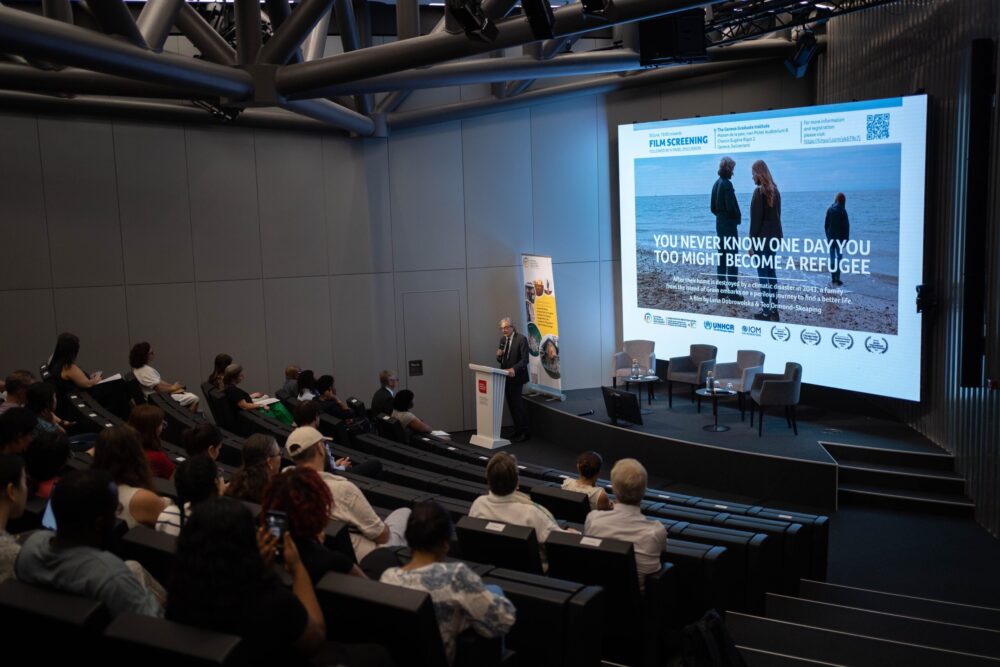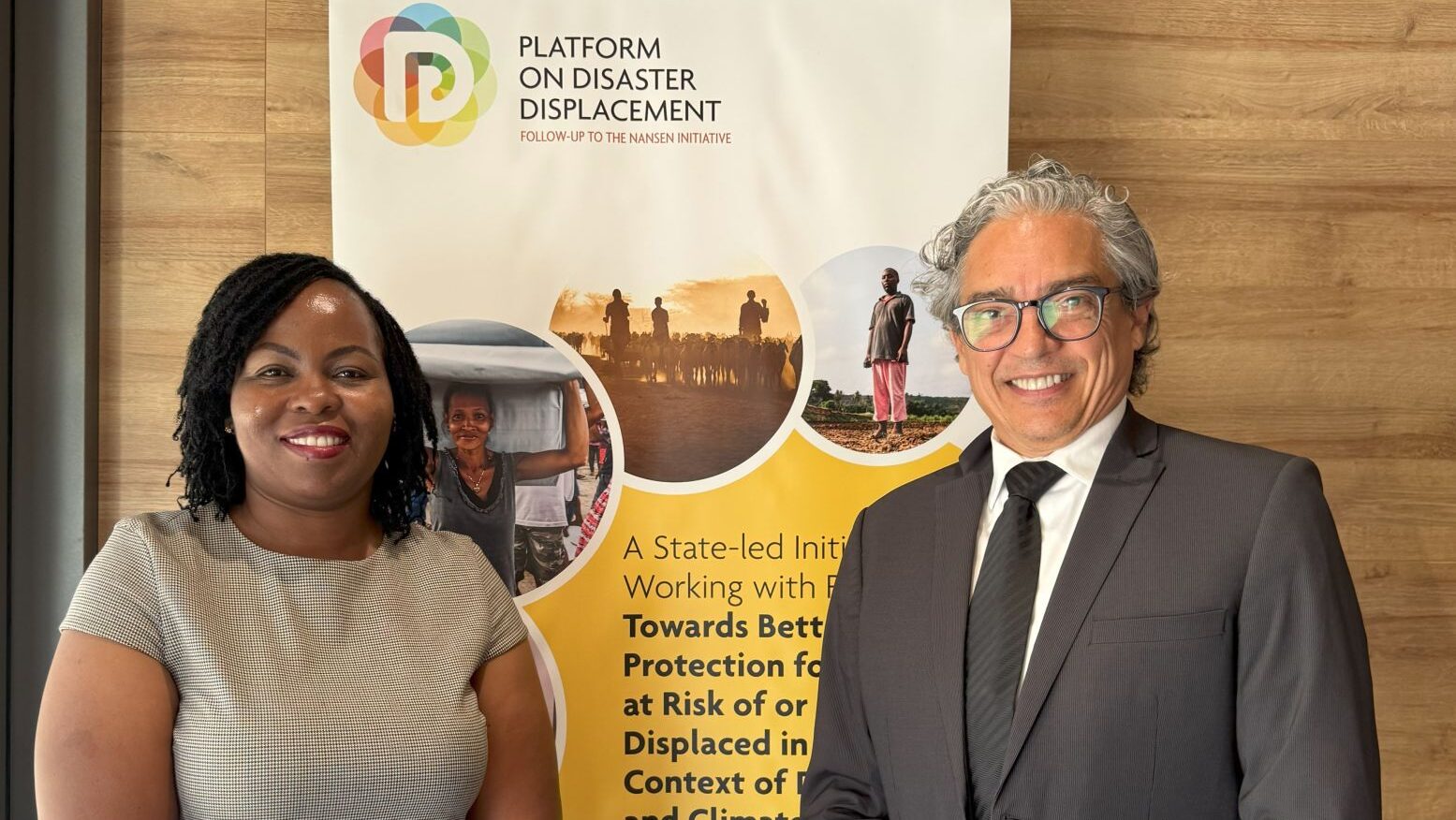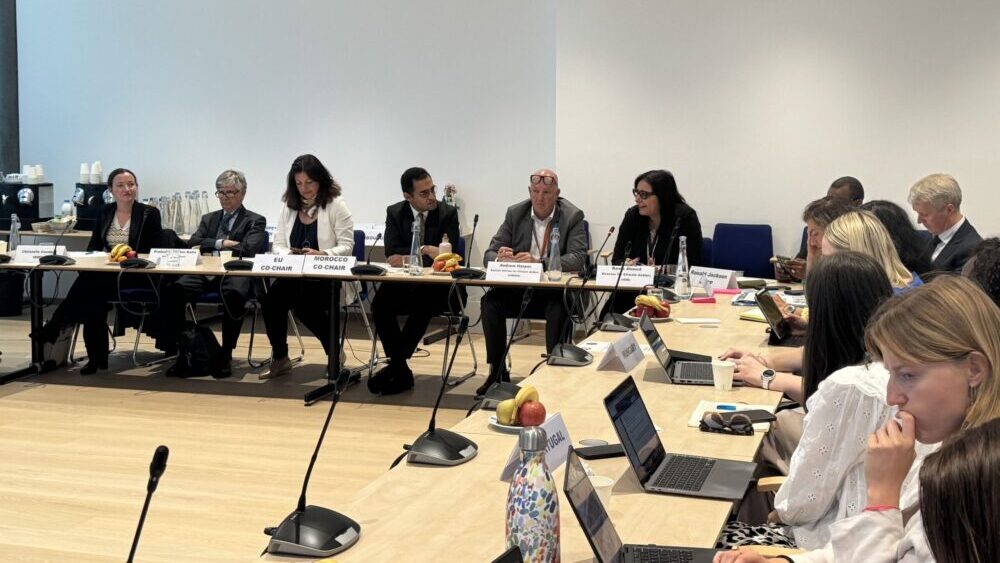Publication | Leaving Place, Restoring Home: Enhancing the Evidence Base on Planned Relocation Cases in the Context of Hazards, Disasters, and Climate Change
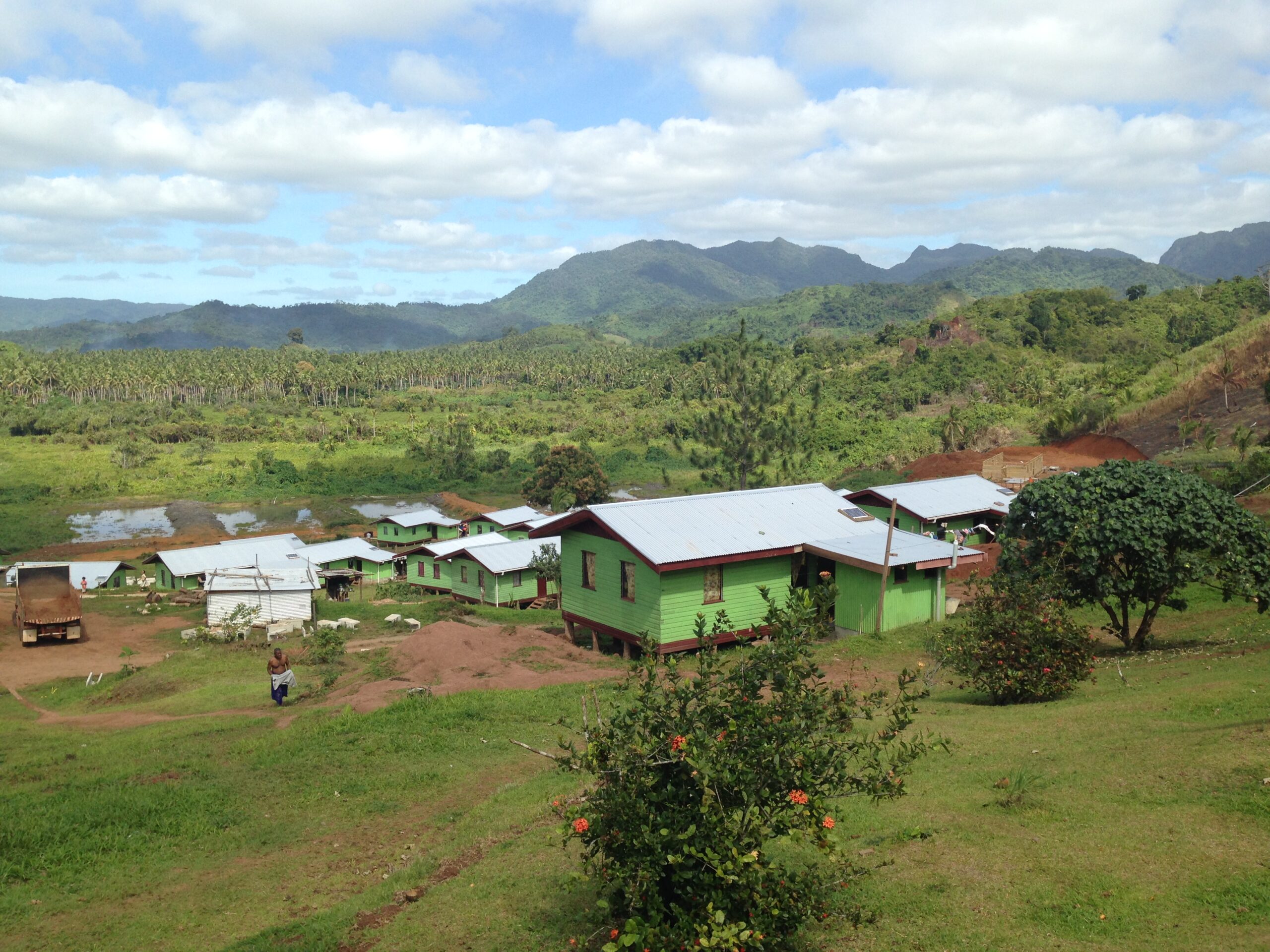
As hazards, disasters and climate change profoundly affect people’s lives and livelihoods, attention is turning toward opportunities to move people permanently out of harm’s way. Most commonly termed ‘Planned relocation’ this phenomenon is gaining traction as a tool for disaster risk reduction and adaptation in the context of climate change – but how much do we know about planned relocation cases across the globe?
The Platform on Disaster Displacement and the Andrew & Renata Kaldor Centre for International Refugee Law at UNSW Sydney are proud to present Leaving Place, Restoring Home, authored by Erica Bower & Sanjula Weerasinghe. This study, and its global dataset of over 300 planned relocation cases, addresses some of the gaps in the evidence base on planned relocation and creates a foundation for further research, analysis and comparison.
Planned relocation, a global phenomenon
The term ‘planned relocation’ became prominent when it was included alongside displacement and migration in the 2010 Cancun Adaptation Framework. However, there is no universal definition of planned relocation and there are different views on which key elements are included in the concept.
For the purpose of this study, planned relocation cases were identified as: the planned, permanent movement of a group of people from identifiable origin(s) to identifiable destination(s), predominantly in association with one or more hydrometeorological, geophysical/geological, or environmental hazard(s). Some actors refer to this form of movement by other names such as ‘resettlement’ or ‘managed retreat’.
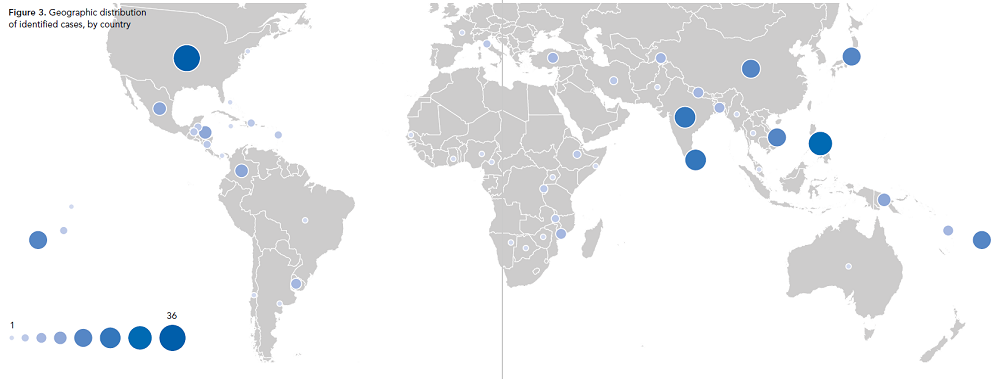
Planned relocation is a global phenomenon; the study Leaving place, Resorting Home identifies cases across all inhabited regions of the world, covering more than 60 countries and territories. Most often driven by floods, tsunamis, storms, erosion, earthquakes, landslides and sea level rise, the study found that many planned relocation cases occur in the context of multiple hazards, with combined harms or risks leading to the need for relocation. It’s also worth noting that decisions to undertake planned relocation may be situated amidst environmental, as well as social, political, economic and demographic drivers.
In key documents discussing planned relocation, it is described as taking place in two types of situations: before a hazard event in anticipation of future risks (“proactive”) and/or after a hazard event in response to realized harms (“reactive”). Leaving Place, Restoring Home found that the reality on the ground more often reflected a continuum from “proactive” to “reactive” relocation. Most of the identified planned relocation cases occurred in the context of multiple hazards both in reaction to realized harms (displacement, livelihood depletion, property damage or other forms of harm) and in anticipation of risks associated with future hazards. An alternative distinction that may be helpful for policy-makers and practitioners is whether a planned relocation is initiated before or after displacement, and what options displaced persons have to return to places of origin in the interim.
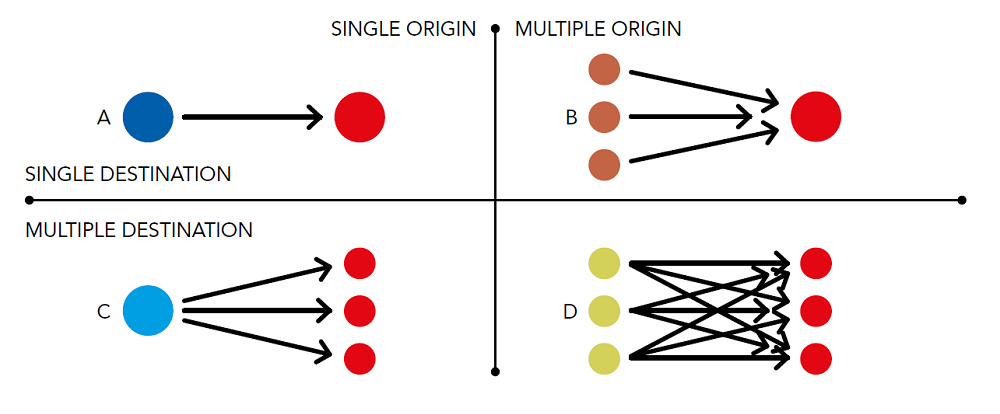
The study identified four patterns of planned relocation. This distinction highlights the importance of better understanding the unique dimensions of diverse spatial patterns, and the important insights this may provide for policy and practice. For instance, planned relocation cases with multiple origin sites require consideration of complex integration dynamics and inclusive participatory mechanisms. In contrast, multiple destination relocation cases may require consideration of the impacts of disintegration of communities, and potential for maladaptive outcomes.
Key findings of the study
Some of the key findings from the in-depth analysis of 34 identified cases include:
- Displacement: A little over half were undertaken after populations were displaced.
- Distance: Most span short distances, of less than two kilometers from origin to destination. In some cases, the distance was as short as 200 meters (Grantham, Australia), and others as far as 64 kilometers (Isle de Jean Charles, USA).
- Demographics: About half involved less than 250 households, and many were in fact far smaller. Nearly all concerned rural to rural sites and approximately half involved communities that identified as indigenous.
- Duration: The time between initiation and completion of the physical move ranged from one to two years, to many decades for some of the ongoing cases.
- Initiating and supporting actors: Community actors initiated half of the cases, while government actors initiated the rest. Government, nongovernmental and community actors supported the implementation of planned relocation processes.
- Challenges: relocating persons face a range of challenges including ongoing hazard exposure in destination sites, the availability and quality of infrastructure or homes, limited opportunities for participation, livelihood changes, cultural loss and intergenerational differences relating to the relocation process. In some cases, relocated persons abandoned their new settlement to return to sites of origin or to move to new places. Better understanding these types of challenges and their repercussions is crucial and further research is needed before promoting practices or proposing solutions.
Leaving Place, Restoring Home, is the first in a number of related studies currently under development. To overcome the English-language bias, a complementary study undertaken by IOM uses the same methodology to examine French and Spanish literature to identify cases. In addition, two snapshots on planned relocation in Asia and the Pacific, a case study compilation that looks at unexplored spatial patterns of relocation, and a report analyzing cases associated with sea-level rise is also forthcoming, commissioned by GIZ and the Kaldor Centre respectively.
The authors Bower and Weerasinghe, both Advisory Committee members of the Platform on Disaster Displacement and affiliates of the Kaldor Centre’s ‘Climate Change, Disasters and Displacement’ project, hope Leaving Place, Restoring Home will be read by other researchers working on the issue, and practitioners and policymakers across all relevant fields. Through this research, as a community working on disaster displacement from different disciplines, we are on the path to gaining better knowledge and evidence on what the phenomenon of planned relocation looks like, in different regions and across the globe. Continuing efforts to monitor and research planned relocation are needed to guide policy and practice that minimizes risks and harms, and protects the human rights, security and dignity of people.
This report has been carried out under the Platform on Disaster Displacement Work Plan 2019-2022 with generous funding support from the Federal Department of Foreign Affairs of Switzerland. It was co-commissioned by the Platform on Disaster Displacement and the Andrew & Renata Kaldor Centre for International Refugee Law at UNSW Sydney.
Vunidogoloa Climate Change Relocation Project, Fiji 2014. Image @ Nansen Initiative.
Useful Links
Access Leaving Place, Restoring Home HERE
 Loading...
Loading...
Access the Global Database of Planned Relocation Cases HERE
Learn more about our partner the Andrew & Renata Kaldor Centre for International Refugee Law at UNSW Sydney
Kaldor Centre “New global dataset: What ‘planned relocation’ looks like in the context of disasters and climate change”
Prevention Web Publication Page: https://www.preventionweb.net/publications/view/77030
Learn more about PDD’s work in our Workplan 2019-2022:
